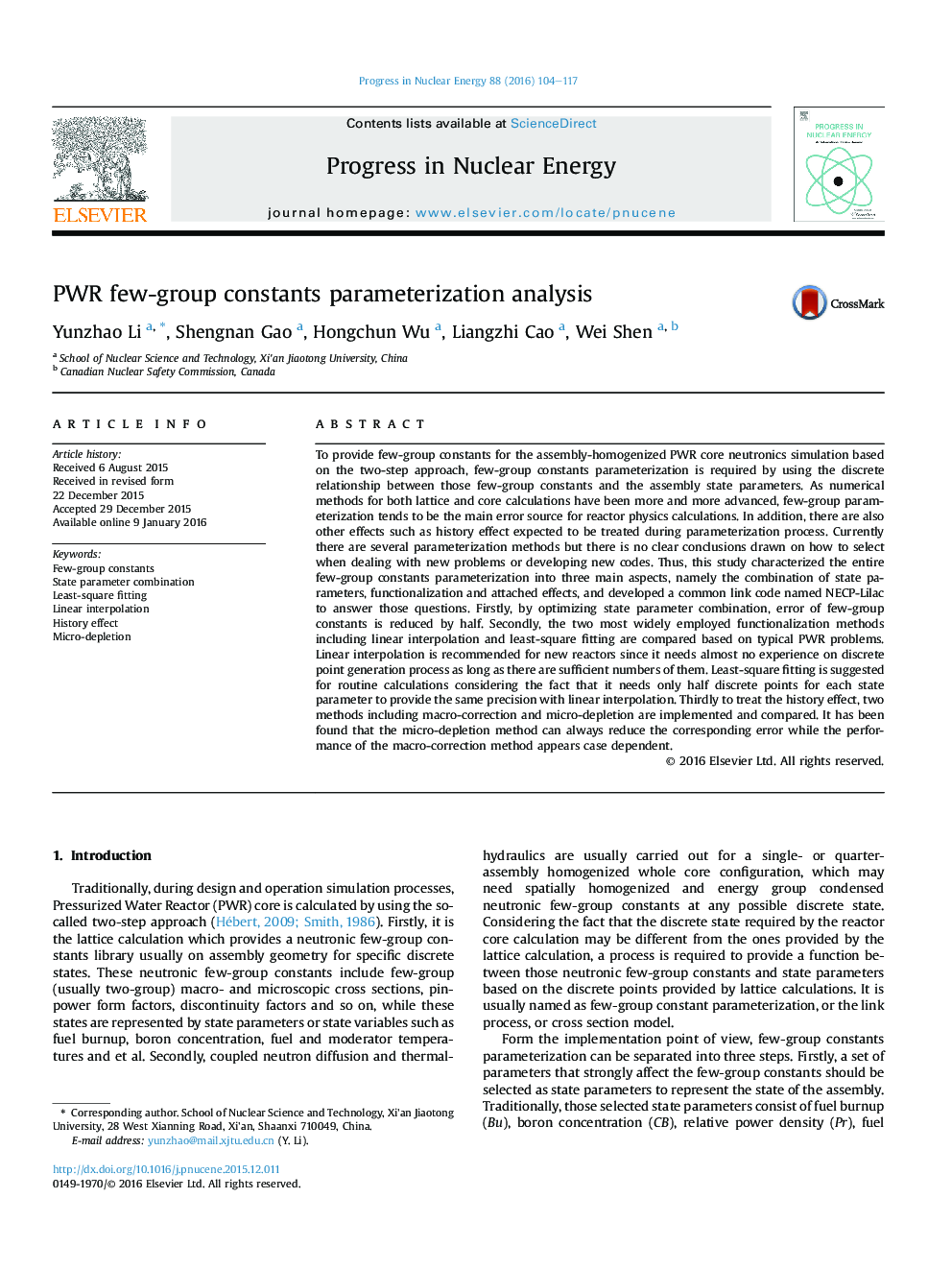| کد مقاله | کد نشریه | سال انتشار | مقاله انگلیسی | نسخه تمام متن |
|---|---|---|---|---|
| 1740380 | 1521750 | 2016 | 14 صفحه PDF | دانلود رایگان |
عنوان انگلیسی مقاله ISI
PWR few-group constants parameterization analysis
دانلود مقاله + سفارش ترجمه
دانلود مقاله ISI انگلیسی
رایگان برای ایرانیان
کلمات کلیدی
موضوعات مرتبط
مهندسی و علوم پایه
مهندسی انرژی
مهندسی انرژی و فناوری های برق
پیش نمایش صفحه اول مقاله

چکیده انگلیسی
To provide few-group constants for the assembly-homogenized PWR core neutronics simulation based on the two-step approach, few-group constants parameterization is required by using the discrete relationship between those few-group constants and the assembly state parameters. As numerical methods for both lattice and core calculations have been more and more advanced, few-group parameterization tends to be the main error source for reactor physics calculations. In addition, there are also other effects such as history effect expected to be treated during parameterization process. Currently there are several parameterization methods but there is no clear conclusions drawn on how to select when dealing with new problems or developing new codes. Thus, this study characterized the entire few-group constants parameterization into three main aspects, namely the combination of state parameters, functionalization and attached effects, and developed a common link code named NECP-Lilac to answer those questions. Firstly, by optimizing state parameter combination, error of few-group constants is reduced by half. Secondly, the two most widely employed functionalization methods including linear interpolation and least-square fitting are compared based on typical PWR problems. Linear interpolation is recommended for new reactors since it needs almost no experience on discrete point generation process as long as there are sufficient numbers of them. Least-square fitting is suggested for routine calculations considering the fact that it needs only half discrete points for each state parameter to provide the same precision with linear interpolation. Thirdly to treat the history effect, two methods including macro-correction and micro-depletion are implemented and compared. It has been found that the micro-depletion method can always reduce the corresponding error while the performance of the macro-correction method appears case dependent.
ناشر
Database: Elsevier - ScienceDirect (ساینس دایرکت)
Journal: Progress in Nuclear Energy - Volume 88, April 2016, Pages 104-117
Journal: Progress in Nuclear Energy - Volume 88, April 2016, Pages 104-117
نویسندگان
Yunzhao Li, Shengnan Gao, Hongchun Wu, Liangzhi Cao, Wei Shen,